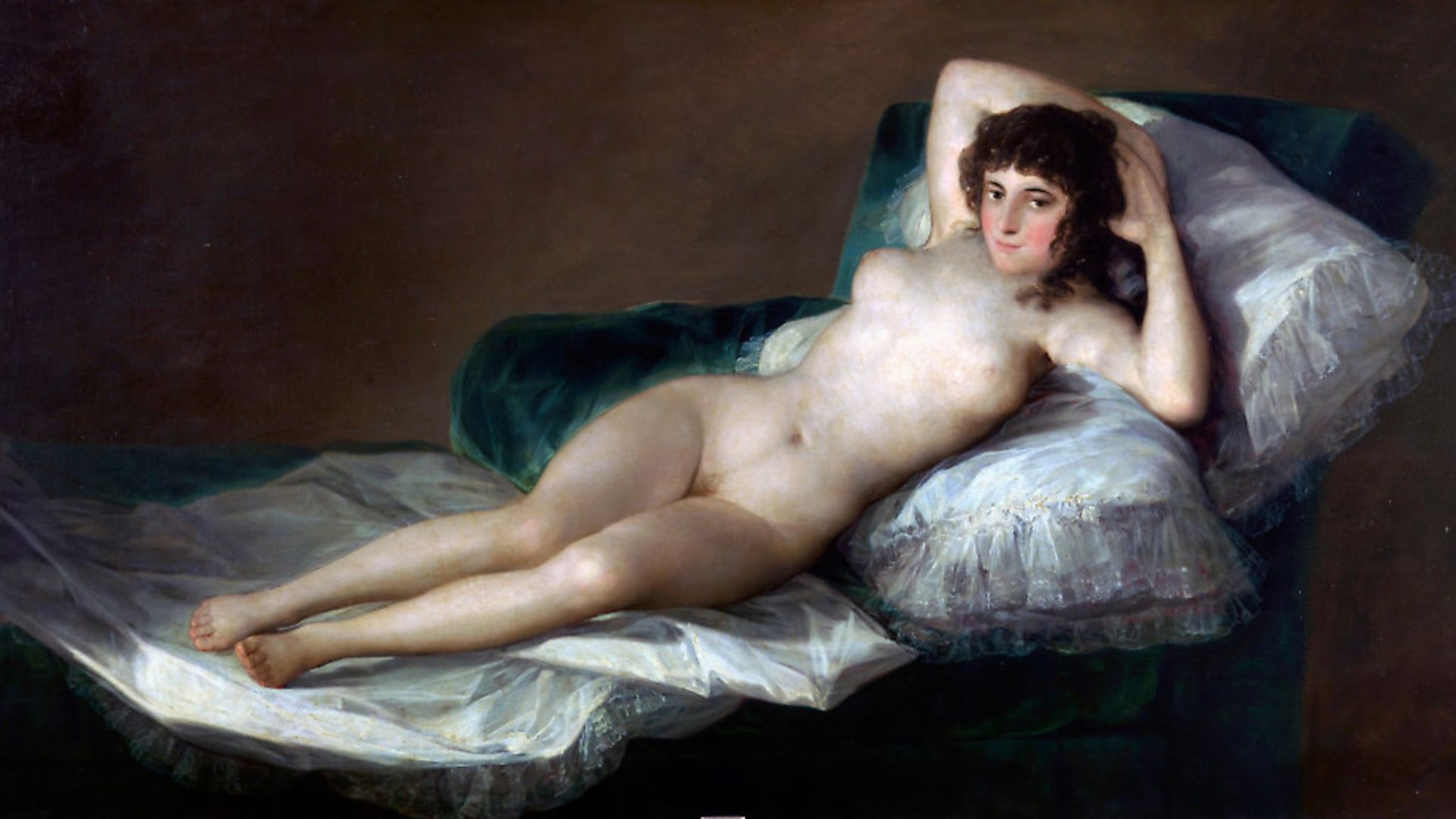
Among the most extraordinary works of art are the Black Pictures of Francisco Goya Here is their story…
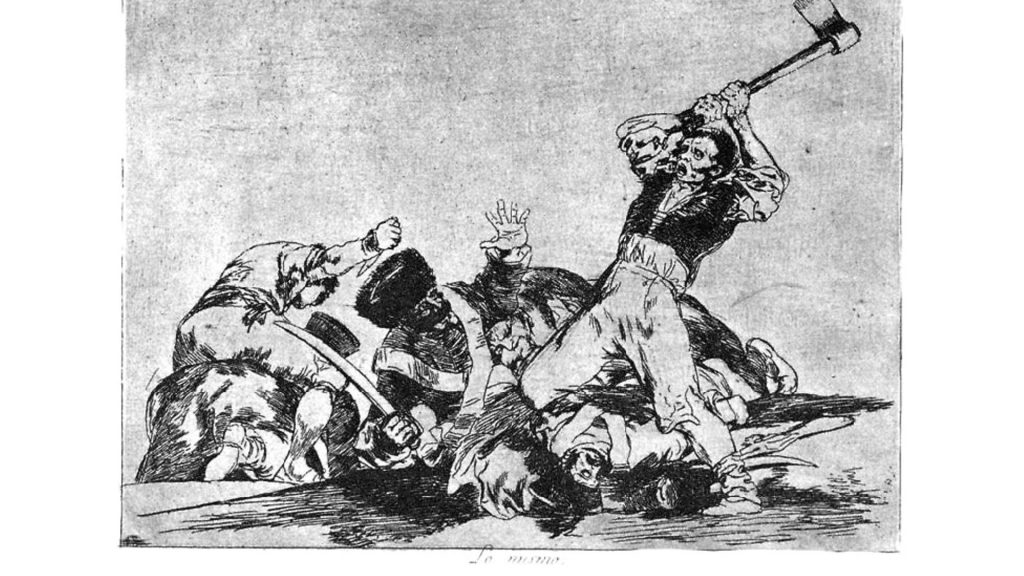
In February 1819 the 72 year old Spanish artist Goya moved into a two-story farmhouse in the countryside west of Madrid. This was Goya’s final retreat from public life – a public life that seen him painting kings and queens, that had him painting angels and martyrs on the vaulted ceilings of cathedrals and designing tapestries with images of carnivals and lovers to decorate Madrid’s palaces.
Despite this public fame and despite his high profile status, Goya’s life was, from our point of view, a life half lived in shadows and silence. He was no great writer of letters and in what he did write he tended to be guarded. Goya was not an artist who liked to explain himself. Between the verifiable details that came from what little he did write and that came from court records and contracts, we are left with vague second hand tales most of which do little other than to add to Goya’s mystery and charisma.
There are anecdotes that as a young man Goya may have been a street brawler, he may have been a bull fighter, he may have been the lover of one of the most beautiful and powerful women in Spain. And if he was the sort of person to write a memoir he could have possibly entitled one chapter ‘Seducer of Nuns’.
But there were no memoirs and he kept no diary and we’ll never know if he really did seduce nuns. Which means that most of what we do know of Goya comes from his art.
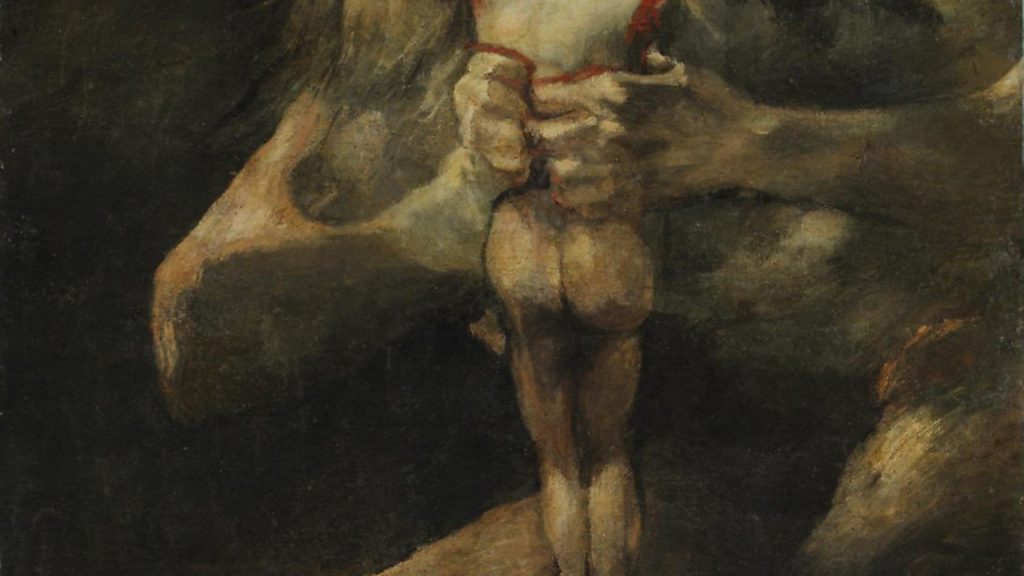
But even this body of work can at times confound because so much of it contains mystery. As a young artist Goya was a superlative painter of narrative. His paintings contained stories and you could read them much like you could read a book. As such you could trace clues as to the kind of man Goya was, how he was someone who operated as much at street level as he was someone who was familiar with the ways of the palace and the court.
But perhaps it was because he was such a master of these engaging and enticing stories that he was also able to produce paintings whose narratives – if you can call them that – confound and confuse the viewer. Paintings that are so violent, morbid and deranged that they are more like assaults on the viewer than enticements.
Goya produced 14 of these violent, morbid and deranged paintings in his farmhouse. These are known as Pinturas negras, the Black Paintings. They were painted on the plaster walls of the house. They were not given titles, there is no record of Goya discussing them with anyone and they weren’t painted for the public. We can only guess at why he painted them and what he was trying to achieve with them.
One of the most famous of the Black Paintings is Saturn Devouring His Son – or at least that is the name that has been given to it. It is almost definitely based on the classical myth of the Titan Saturn who devoured his own children, but what inspired Goya to paint it is a mystery. The basic question is as to whether the painting is about something personal, most likely the ageing process (Goya was ill and old) – or whether it is to do with something political (most likely to do with the restoration of the reactionary Bourbon Monarchy in France, which was something that Goya was opposed to).
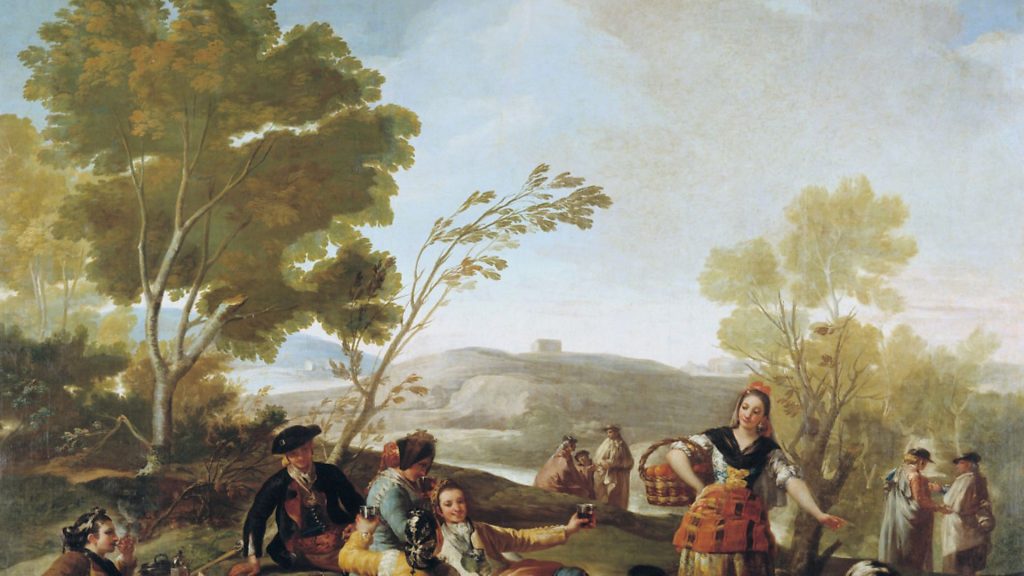
Or maybe the painting is to do with Goya’s relationship with his only son. Or maybe the figure being devoured isn’t male – the buttocks look feminine – and the painting is about the elderly Goya’s – probably sexual – relationship with his much younger housemaid. Or maybe he was reacting to paintings that either already existed in the house or that he had done earlier (x-rays suggest that there were some paintings underneath). Maybe he was reworking ideas he had when he saw Rubens’ equally brutal Saturn Devouring His Son which was on display in Madrid’s Prado. Then there is the question of whether this painting is best understood as part of a series along with other paintings in the house, or whether it was meant to be understood on its own terms.
All of this is guess work because what these paintings do not have is a clear narrative, and Western painting up until the time – and this is the broadest of broad generalisations – was more often than not all about narrative. Art told us stories.
Christian religious painting tells us stories, stories that we know from the Bible. In certain ways Christianity is based on a series of stories, a series of spoken or written narratives, which can be visually reproduced and embellished in art. Painting of classical or historical subjects are the same. The inspiration is a series of stories from antiquity or the past. You look at these paintings and you are looking at stories – or moments in stories with which you would be familiar.
And you also ‘read’ portraiture because the picture simultaneously asks and answers the question ‘who is this that has been painted?’. The asking and answering of questions is the basic building block of all story telling. This is why people write novels or make up theories about famous and brilliantly executed portraits, like the Mona Lisa or The Girl with the Pearl Earring, portraits that rather thrillingly don’t quite answer the ‘who is this’ question that the painting has set for itself.
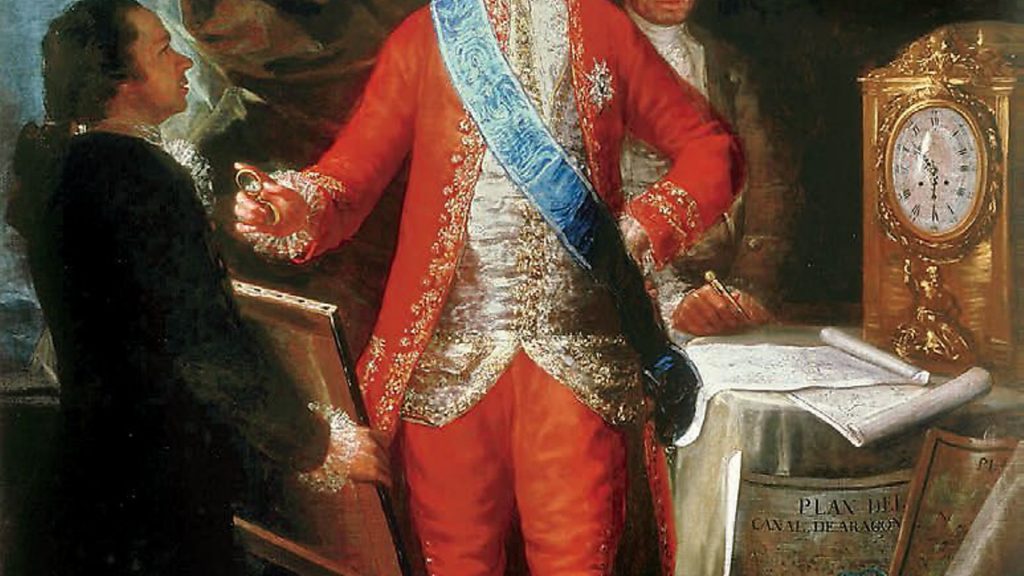
Of course there are exceptions to this ‘all art is narrative’ theory. For example still life painting, as the title suggests, sort of precludes narrative. But only sort of because on the one hand we the viewer have an instinct to ‘read’ the picture and try to place it in some sort of story, and secondly (and these points are connected) artists were always packing their still lives with stuff that could be read – skulls, flowers, knives, fruit, dead animals, crucifixes and so on. These symbols almost constitute being a language, a language we can read.
Goya’s early successes were triumphs of narrative in art. It was these early paintings that made his name and saw him rise up though the social ranks. He threw himself into Madrid life and his paintings – his narratives – described Madrid’s society from the gutter to the alter and from the carnival to the palace.
Francisco Goya Y Lucientes was born in Fuendetodos, Aragon in 1746 to lower middle class parents. In 1749 Goya’s family returned to their home town of Zaragoza and it was here that Goya received an education and where he first showed signs of talent as an artist. His art training was a mixture of the formal and the informal, so whilst he studied as an apprentice in Zaragoza he also travelled to Rome, under his own initiative, to further his artistic education. Here he supposedly supported himself as a street acrobat or perhaps as a bullfighter or perhaps he was (somewhat extraordinarily) a Russian diplomat. The details, as always, are simultaneously colourful and vague.
In 1775 Goya moved to Madrid where, through a family contact, he got a job producing tapestry cartoons (preparatory works) for the Royal Tapestry Factory. Between 1775 and 1792 Goya painted more than 60 tapestry cartoons for seven different series of tapestries that were to be hung in royal palaces.
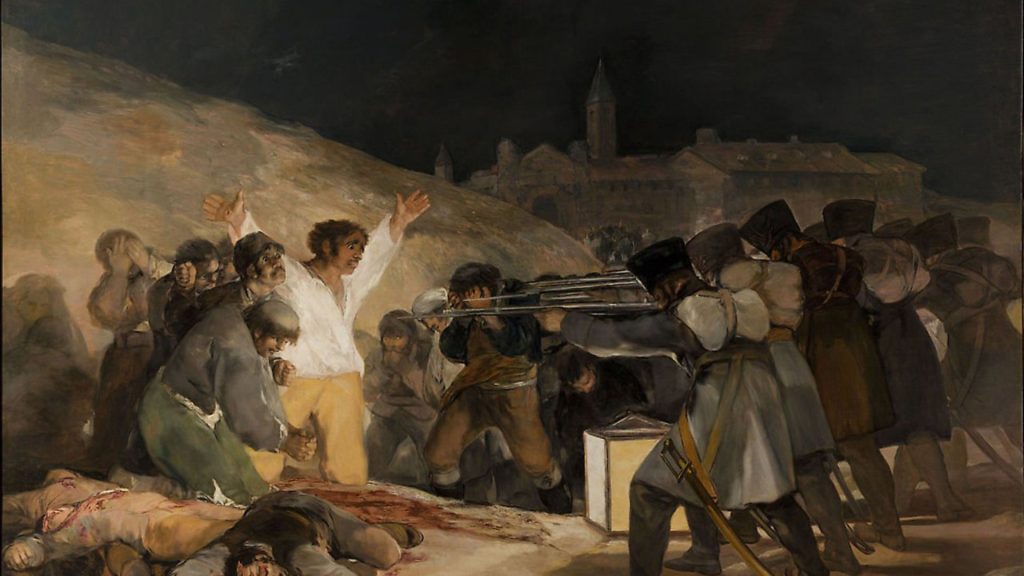
You can read most of the tapestry cartoons like stories. Here are dramas with clear narratives. In one, The Picnic, painted in 1776 we see a group of young men lounging in the sunshine finishing their meal. Their attention is held by a woman, an orange seller, who is flirting with the young men. She is looking at one and is pointing away out of the frame of the picture as if inviting him to join her.
These young men were known as the majo. The majo were urban lower class young men who dressed colourfully in exaggerated traditional Spanish dress. They mimicked the airs of the aristocracy and they were streetwise, menacing and has a coarse and biting wit. Their female counterpart was the maja who dressed in equally exaggerated costumes and had the same sharp tongued wit. They were also considered (mostly by men) to be licentious.
Goya knew the world of the majo. He was of their class and some of his rumoured adventures seem to come from that world. Much later, at the age of 46, he would paint himself painting a self portrait whilst dressed as a majo. There was in Spain at the time of Goya’s painting a cult of the majo and the maja. Aristocrats would dress as them in masked balls and they were the subject of plays and prints. They would crop up in a few of Goya’s tapestry cartoons. They got him attention and this took him into the lucrative world of royal and political portraiture.
In 1783 Goya painted a portrait of the Count of Floridablanca – it made his reputation because the Count of Floridablanca was one of the important Spanish political figures of the age. Goya began to move in circles within the Spanish court that were, by Spanish standards, associated with enlightened, reasoned thought. This group were a progressive political enclave within a Catholic and absolutist country. This was a world view that Goya shared; he believed in reason and progress and had an enlightened view of humanity. More importantly he got to paint most of the key political figures associated with this enclave and then, social climber that he undoubtedly was, he got to paint various royals including the Royal Family.
And in so many of these portraits Goya’s strong narrative instinct stands out. In that first, breakthrough, portrait, of the Count of Floridablanca he painted himself, half in shadow and looking up at the Count. Was this fawning perhaps? Obsequious perhaps? Or maybe he was just being fiercely ambitious and putting himself in the frame.
And his ambition paid off. In one of his relatively rare letters, that offers something of an insight to the man, he crows to his friends about how well he is doing and how fancy his new coach is. At this point of his life Goya moved freely though all levels of Madrid society – from the majo to the king.
And then in 1793 everything changed. Goya became ill. No one knows the cause of this illness – more shadows and more silence – it may have venereal disease, a brain tumour or lead poisoning. Whatever it was it was serious and it nearly killed him. It left him profoundly deaf.
After his deafness he continued as a court painter and continued to be successful, but gradually something that was always hinted at and was nascent in his work became more developed. There was something that we now consider modern creeping into his work, something that was questioning how art worked.
But also after his deafness Goya started to produce art that was no longer a narrative between him and his audience but was, instead, a narrative that took place within himself. And this narrative, as well as being about how art worked, was also about death, sex, violence and horror. Ultimately this process would produce a body of work that would transform some of the fundamental assumptions that people held about art.
One of the first big shocks came with Goya’s 1800 painting La maja desnuda (Nude Maja). This painting of a naked woman shocked for a number of reasons; her sexuality, the inclusion of her pubic hair and, perhaps most shocking of all, the defiant gaze of the model. Woman were not really painted like that before Goya – and at least not for public display. This was original.
Obviously there was an audience for paintings similar to this – many an aristocrat or wealthy merchant had private collections of erotica, collections where paintings of pubic hair would be considered merely entry level stuff. But one thing you tend not to get in erotica, for obvious reasons, is the feeling that the subject is sizing up the viewer. And that is what is extraordinary and original about this picture. It’s her gaze that singles this painting out because she is gazing at us gazing at her.
In La maja desnuda Goya had suddenly, brilliantly, shockingly, introduced self consciousness into how we look at and read a picture. This master of narrative was experimenting with narrative in a way that gets to the very heart of art. He was making art that was conscious of itself, conscious of how it worked. It was art that demanded something unexpected of the viewer. It was an intimation of modernism.
And then 10 years later Goya produced a body of work that – in it’s horrifying clarity, in its moral nihilism – was one of the first systematic questionings of what art is for and how it works.
In 1808 Napoleon invaded Spain. The Peninsula War, as it is known in the UK, was a war fought between standing armies but was also a brutal guerrilla war of national liberation for the Spanish. In 1814 Goya painted The Third of May 1808, a painting of the execution of Spanish insurrectionists by French troops. In this shocking panting there is a narrative but it’s one that does not move towards any sort of cathartic resolution. The framing and staging of the painting denies the humanity of the French troops – we only see their backs – and the humanity of the Spanish is about to be destroyed in a systematic way; we see a pile of corpses to the left of those about to be executed and a group waiting for execution to their right. The Christian imagery of praying or of sacrifice (the central figure is a soon to be killed Spaniard with his arms spread wide like Christ on the cross) seems pointless. There is no grace and nothing noble. It’s just men killing each other.
Aesthetically and morally this painting is a revolutionary work of art. It offers no consolations and it does not resolve itself to a higher ideal. As such it challenges the idea that art is part of what we may consider civilisation to be. As such it challenges the very idea of civilisation.
This painting was followed by a series of etchings called the The Disasters of War. These etchings are horrifying. If The Third of May 1808 is the work of a man who has no illusions about war then these etchings give form to what that disillusioned worldview looks like. We see figures being castrated, raped, decapitated, and hacked to pieces. Two centuries later these etchings are still horrifying to look at.
Goya was a man who had believed in the enlightened view that there was an innate goodness to humanity and his early paintings revelled in the details of life. He was essentially a humanist. He was also, despite never being overtly Christian, happy to take commissions from a Church who believed in the sanctity of life. But these things, humanity’s innate goodness, the joy of being alive and the sanctity of life have become meaningless in these etchings. These etchings are arguments against those things. They are the negation of humanity. And if all meaning is emptied out of existence, if humanity is seen as something innately negative (and as little more than meat) then the ability of art to explain, to illuminate and to reassure, just fails.
This was the point of narrative in art. It alluded to our ideals and was fundamentally an argument that to be human was to be good. The stories from the Bible, from antiquity, from politics or from social observation allowed art to be the expression of our highest desires, or the perfect image of ourselves, or it delighted in our place in the world. Suddenly with Goya, with these etchings, it’s no longer that. There is nothing redemptive or transcendent in these etchings. We are just vile brutal creatures. There is still narrative in these images but the stories are stories of broken and shattered flesh. And the stories end in silence; words become meaningless in the face of such horror and the world just falls away into nothing.
What is extraordinary about this is that this description of art – that it is useless in the face of human barbarity – is exactly what people said a century after Goya. It what was said after the horrors of the Somme and Verdun and the Holocaust and Hiroshima – horrors that were way beyond anything Goya pictured or imagined.
I don’t think that there is any doubt that what changed in Goya was twofold. His illness, the deafness and the increased terror of his own mortality, produced something dark in his work. But I also think that what he witnessed in the Peninsula War fundamentally changed his belief in art – of what it was and how it worked.
And that culminated in Goya’s Black Paintings – these dark, morbid, brutal paintings of witches and devils, of monsters and of ageing, decay and loneliness. These are paintings that have no narrative that we can immediately grasp. For Goya all the stories we tell ourselves are meaningless in the face of our horrific nature and the horror of own existence. And free of the need to explain and to illuminate, Goya has produced art that creates its own meanings – it own dark terrifying truths, truths that shift between nothing and terror.
In this farmhouse Goya produced something akin to the absolute opposite of a church; a place full of images dedicated not to light and redemption and meaning but dedicated to death and horror. And in the same way that the stories you find in the art of a church have their origins in words – or The Word – then the paintings that were in this farmhouse exist in silence. There are no words. Just silence and terror.
And this is the birth of the Modern in art because Modernism is essentially a search for meaning in a Godless, indifferent universe full of brutal and terrible truths. With these Black Paintings the veil is stripped away, leaving just the broken images and the ‘fear in a handful of dust’. As such, Goya’s artistic language stands alongside that of Picasso or TS Eliot or Beckett or Bergman. He just got to the same point as them about 100 or so years earlier.
Ian Walker is a journalist and former museum curator living in Munich









